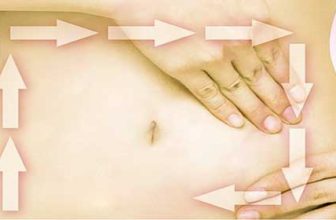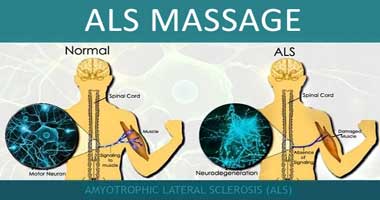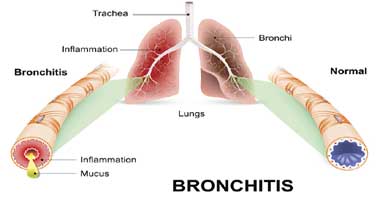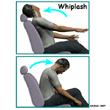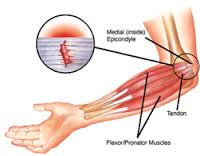
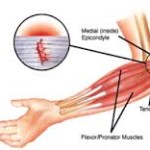 Golfer’s Elbow – Golfers Elbow or medial epicondylitis, is an inflammatory condition of the medial epicondyle of the elbow. It is a condition that causes pain on the inner side of the elbow, where the tendons of the forearm muscles attach to the bony bump on the inside of the elbow. The pain may spread into your forearm and wrist.
Golfer’s Elbow – Golfers Elbow or medial epicondylitis, is an inflammatory condition of the medial epicondyle of the elbow. It is a condition that causes pain on the inner side of the elbow, where the tendons of the forearm muscles attach to the bony bump on the inside of the elbow. The pain may spread into your forearm and wrist.
Signs And Symptoms of Golfer’s Elbow:
Medial Epicondylitis ( Golfer’s Elbow)
- Common Flexor Tendons are located distal to the medial epicondyle.
- Microtearing occurs in the flexor tendon and pronator teres tendon.
- Repetitive activity such as hammering or screwdrivers cause injury.
- Sports injuries involving wrist flexion and pronation such as golfing, overhead tennis serving.
- Pain at the medial epicondyle.
- There may be nerve involvement as the ulnar nerve passes through a hiatus ( space/break) in the flexor carpi ulnaris muscle. ( there may be numbness and tingling sensations distal to the compression)
Grades of Golfer’s Elbow: golfers elbow massage
- Grade 1 Golfers Elbow: pain after activity only
- Grade 2 Golfers Elbow: pain at the beginning of activity, disappears with activity, returns afterwards
- Grade 3 Golfers Elbow: pain at the beginning, during, and after activity; pain may restrict activity
- Grade 4 Golfers Elbow: pain with activities of daily living, and to get worse
Acute Golfer’s Elbow Symptoms:
- Gradual onset, tenderness local to the proximal flexor tendons one or two days after activity. The tenderness progresses into pain during activity as the tendonitis becomes severe.
- Microtearing causes a cycle of inflammation and the formation of adhesions and even crepitus in the area
- Inflammation, heat and swelling at the tendon or sheath
- Decreased range of motion of the wrist flexors – decreased wrist flexion, also elbow
Chronic Golfer’s Elbow Symptoms:
- Pain during and after activity
- Chronic inflammation, adhesions, crepitus and fibrosis present
- Decrease in ROM-range of motion and strength of the wrist flexors
- Flare —ups to acute stage may occur with repeated overuse
- Flexor Tendons may degenerate until rupture occurs
Golfer’s Elbow Special Orthopedic Tests:
- AFROM- usually painless
- PR ROM may have pain when extending wrist
- AR ROM painful on contraction of flexor tendons ( pain increases with increased resistance)
Special Tests: golfers elbow massage
- Flexor Tendinosis Test ( active) — therapist try to extend, client flexing. Positive sign- pain
- Reverse Mills Test ( passive) — stretch the wrist into extension. (+) pain
Golfer’s Elbow Massage Therapy Treatment:
ACUTE Golfers Elbow Massage Therapy Treatment:
- affected arm elevated (if really inflamed), cold hydro applied to the medial area of the forearm
- MLD ( manual lymphatic drainage) to the affected arm
- Treat proximal arm for hypertonicity
- Ischemic compressions to trigger point referring to the lesion site
- Treat hypertonicity in antagonists of affected muscles, DO NOT flush toward the medial area of the forearm near the elbow- lesion site (use segmental instead of long strokes)
- Treat hypertonicity of wrist flexor muscles using GTO on the unaffected distal tendons of the wrist flexors
- Muscle squeezing and stroking to distal limb
- Pain free Passive Relaxed ROM on proximal and affected joint to maintain succusive action
- Gentle joint play to affected arm
CHRONIC Golfers Elbow Massage Therapy Treatment:
- Position for comfort
- Hydro is local deep moist heat ( to soften adhesion and increase circulation)
- If chronic edema remains, begin with fascial work to loosen area, follow with contrast hydro to flush it out
- Proximal arm treated to increase circulation and to decrease hypertonicity and trigger points
- Wrist extensor muscles treated with skin rolling, long effleurage, pettrisage to increase circulation
- Wrist flexors treated, working toward the lesion to increase circulation
- Adhesions may form between tendons and paratendons or at musculocutaneous junctions of the wrist flexor muscles.
- Skin rolling, fascial spreading and muscle stripping used on wrist flexor muscles to decrease adhesions before cross fiber friction technique is used
- Follow frictions with passive stretch and ice
- Distal limb may be treated with effleurage and petrissage
- Joint play and Passive ROM to affected arm
- Passive stretch to wrist flexor muscles
Considerations and Contraindications for Golfer’s Elbow Massage Therapy Treatment:
- NO Frictions on the wrist flexor muscles and tendons when client is taking anti-inflammatories
- If client is taking anti-inflammatories, therapist uses only fascial techniques & muscle stripping to decrease adhesions in the tendons
- Avoid techniques that increase circulation to the lesion site during acute stage or when inflamed
- Do not flush toward the lesion site during acute stage or when inflamed medial epicondylitis massage, golfers elbow massage, golfers elbow massage relief, golfers elbow massage therapy, golfers elbow massage treatment
Self Care for Golfer’s Elbow: Tennis Elbow Massage
Acute Golfers Elbow: Tennis elbow massage lateral epicondylitis massage
- Relative rest from the cause of the golfer’s elbow.
- Rest continues until pain and inflammation decreases. This prevents the golfers elbow from becoming chronic.
- Hydrotherapy is ice immediately after activity. 5-20 mins duration.
- Slow pain-free stretch to wrist flexors to increase flexibility
- When pain is gone before, during and after activity, Begin with pain-free isometric exercise, then strengthening of the wrist flexors to regain full strength of the muscles and to prevent reinjury
Chronic Golfers Elbow:
- Contrast hydrotherapy to increase tissue health. Ice on the medial area of the affected arm during flare up
- Self massage to wrist extensors and wrist flexors
- Stretching of the wrist flexors continued from acute stage, & wrist flexor strengthening can be isotonic.
- Eccentric exercise appears to have specific strengthening effect on tendons
- Client should work up to 3 sets of 15 reps of isotonic exercises for the wrist flexors
- Modify sport or occupational activity to reduce repetition & speed
- Exercise routine, including stretching of the wrist flexors
